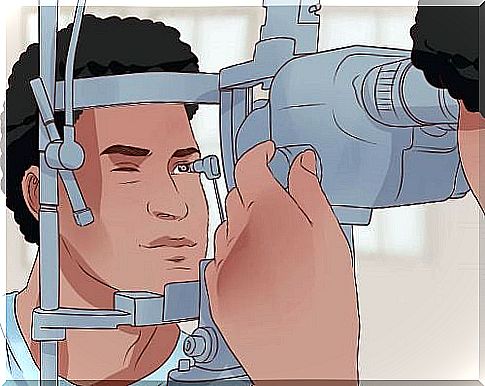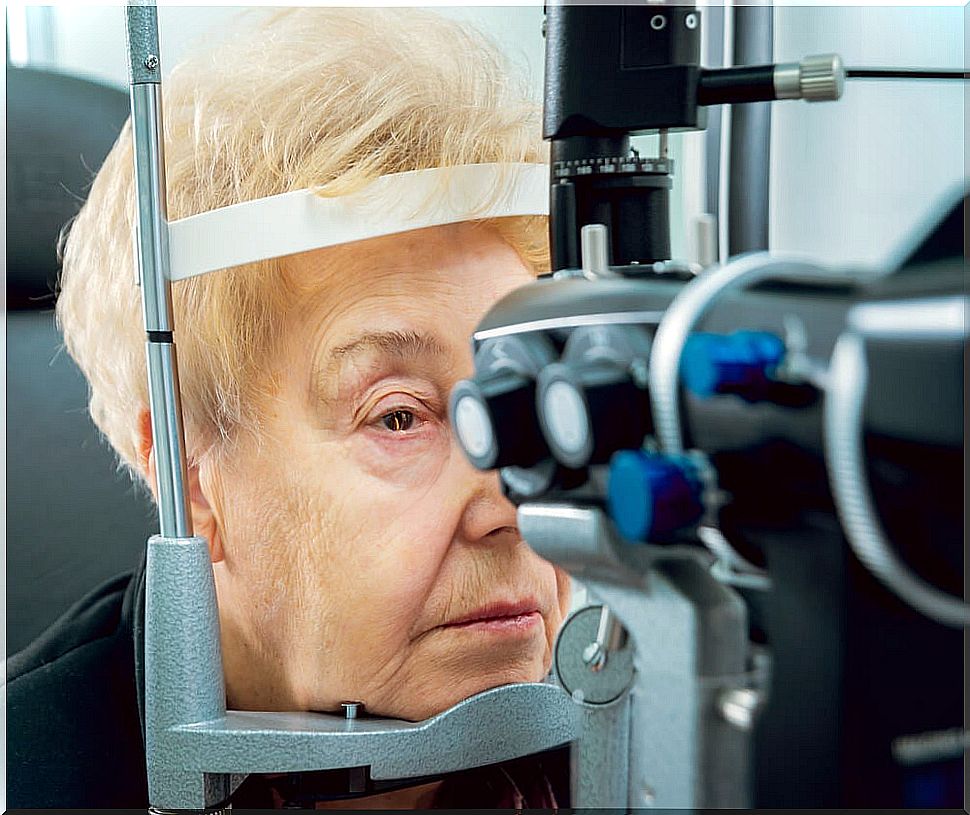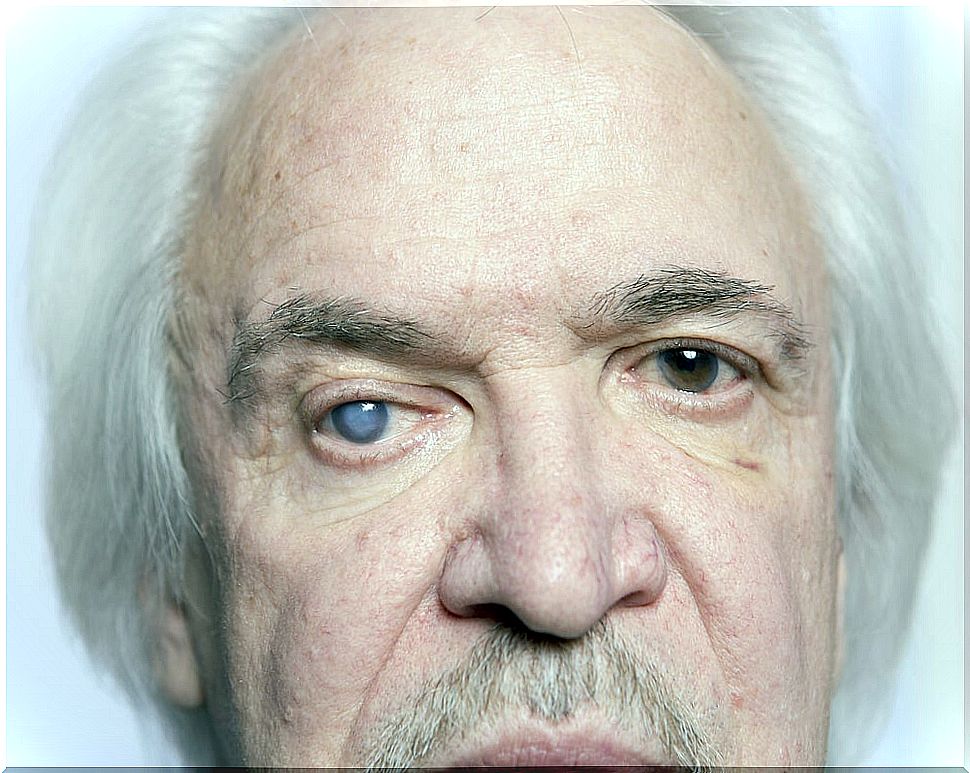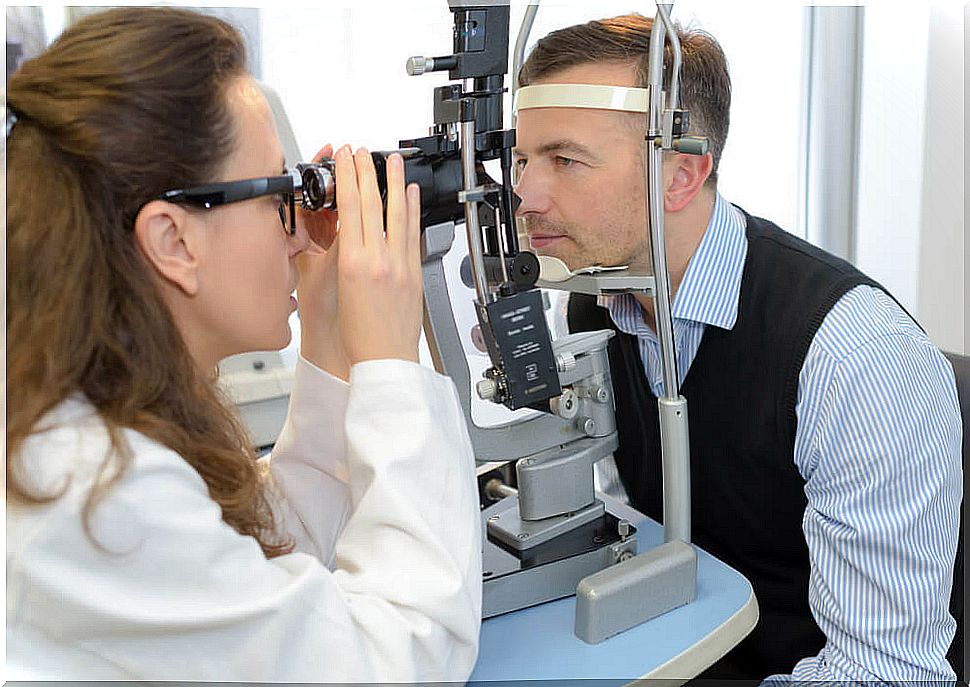Falls

Cataracts are a very common eye condition. It is due to a loss of lens transparency, the structure of the eye that allows you to focus objects correctly. Because of this, it is difficult to carry out different daily activities, such as reading, driving, etc.
Types of cataracts
Depending on the production mechanism, cataracts can be divided into:
- Congenital : appear during infancy.
- Secondary: appear as a consequence of another process and can be:
- Toxic
- Traumatic
- Derived from another ocular condition (such as uveitis).
- Systemic diseases: derived from certain diseases (such as diabetes mellitus and hypoparathyroidism).
- Senile: are derived from aging and are the most common. They make up 90% of cataract cases.
senile cataracts

This is because, with aging, lens transparency is progressively lost due to several factors:
- Environmental factors:
- Solar radiation.
- smoking
- Metabolic factors:
- Nutrition
- Genetic factors.
See also: How to prevent glaucoma naturally
congenital cataracts
Congenital cataracts appear from birth or in infancy, they can be unilateral or bilateral. They appear due to multiple factors during pregnancy. Certain maternal metabolic diseases can cause congenital cataracts, such as diabetes mellitus, hypocalcemia, or certain nutritional deficiencies, such as vitamin A or folic acid deficiency.
Intrauterine infections are also an important cause, with rubella being the most common, representing between 30 and 60% of cases. Presents a picture of microphthalmia, retinitis pigmentosa, deafness and congenital heart disease associated with cataracts. Other infections are mumps, hepatitis and toxoplasmosis.
Another cause of cataracts, although less frequent, is the administration of some drugs during pregnancy, such as thalidomide; or diagnostic tests such as X-rays. It should be noted that certain diseases in the fetus can increase the risk of cataracts. This is the case for some chromosome disorders, such as Down syndrome, or inherited childhood metabolic disorders (they include galactosemia, hypoparathyroidism, or Lowe syndrome).
Cases of cataracts due to chromosomal abnormalities or inherited childhood metabolic diseases represent 1% of the population.
What Causes Cataracts?

Cataracts cause a decrease in visual acuity. Depending on which part of the lens they affect, they will be seen in one way or another:
- Nuclear cataracts, representing 30%, affect the nucleus.
- Cortical cataracts are 50% and with the slit lamp they are seen as triangular and radial opacities.
- Subsequent subcapsular cataracts, 20%, in which visual acuity decreases in bright light. May occur due to corticosteroid treatments or diabetes mellitus.
The loss of visual acuity is gradual. Thus, different stages of evolution of cataracts are distinguished:
- Incipient: visual acuity between 0.8 and 1.0. It’s called phacosclerosis, there is a hardening and rigidity of the lens due to age.
- Developed: visual acuity between 0.1 and 0.5. Cataracts have a dense core.
- Mature: visual acuity less than 0.1. They can perceive light movements and variations. The lens is white, which is called leukocoria and is intumescent. It is not possible to see the background with the slit lamp.
- Very mature: they only perceive light variations. The core is brown, it is very unusual in our environment.
Symptoms
A patient with cataracts will have a blurry sensation, as if seeing through dense fog, with progressive decrease in visual acuity (faster in posterior capsular cataracts, which also produce a sensation of dazzle).
It is important to ask the patient about the rate of progression of vision loss. On the other hand, it must be evaluated whether lighting conditions influence the patient’s vision, and that it generally hinders night vision. These patients will also report a decrease in sensitivity and contrast change in color perception.
Cataracts can also present with other eye symptoms, such as monocular myopia or diplopia (commonly known as double vision).
Diagnosis

When it is suspected that a patient may have cataracts, a complete eye exam is necessary . When the presence of cataract is confirmed, other tests are performed in the face of corrective surgery:
- Biometric studies such as type A ultrasound and studies to determine the intraocular lens measurements that will be used to replace the lenses.
- Study of the corneal endothelium with specular microscopy. This is important because corneal endothelial cells do not reproduce. In the face of trauma like cataract surgery, many of these cells become separated, which can result in long-term eye problems. It is interesting to check the status of these cells before surgery to predict possible complications.
Treatment
Treatment is fundamentally surgical. This consists of a simple and minimally invasive procedure that, in fact, is done without the need for a hospital stay. In addition, there are other research techniques that will offer other alternatives in the future.









